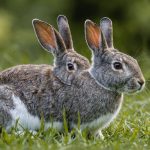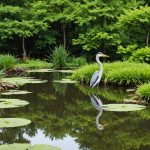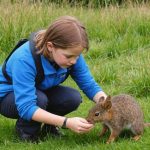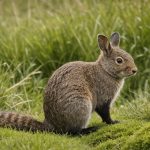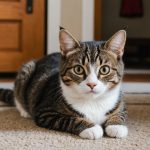Creating an indoor cat garden enhances your feline's well-being while adding charm to your home. This guide offers creative ways to craft a safe and stimulating environment tailored to your cat’s needs. Whether you’re working with a small apartment or a spacious house, you’ll discover practical tips for incorporating greenery, enrichment features, and cozy retreats. Transforming your living space into a feline paradise is easier than you think—let’s explore the possibilities together.
Introduction to Indoor Cat Gardens
Creating an indoor cat garden is an enriching way to enhance your cat's environment. Cats thrive in stimulating spaces that cater to their natural instincts. An indoor cat garden provides a cat-friendly space that promotes exploration and play, contributing positively to feline wellness.
Dans le meme genre : Essential Tips for Detecting and Preventing Flystrike in Outdoor Rabbits During Humid Conditions
Indoor gardens offer numerous benefits for cat health. They provide mental stimulation and physical activity, reducing boredom and the likelihood of destructive behaviors. Moreover, certain plants can improve air quality, which is beneficial for both humans and pets.
Benefits of a Stimulating Environment
A well-designed cat-friendly space can significantly improve your cat's life. Here are some key benefits:
A lire en complément : Effective Strategies to Protect Your Fish Pond from Herons and Other Predatory Threats
- Mental Stimulation: Engages your cat's curiosity and intelligence.
- Physical Exercise: Encourages movement, helping to maintain a healthy weight.
- Stress Reduction: A natural environment can soothe and calm anxious cats.
What This Guide Will Cover
This guide will explore how to set up an indoor cat garden, including plant selection and layout tips. We'll focus on creating a cat-friendly space that supports feline wellness. From choosing the right plants to understanding the needs of indoor cats, this guide aims to provide comprehensive insights for cat owners.
Selecting Cat-Friendly Plants
Choosing the right plants is crucial for creating a safe and enjoyable indoor cat garden. Cats are naturally curious, and selecting cat-safe plants ensures they can explore without risk.
Common Cat-Safe Plants
Several plants are known for being non-toxic and safe for cats. Consider these options:
- Spider Plant: Known for its air-purifying qualities.
- Catnip: Offers mental stimulation and playfulness.
- Bamboo Palm: Safe and adds a tropical touch.
- Boston Fern: Provides lush greenery without toxicity.
Tips for Stimulating Feline Senses
When selecting plants, focus on those that engage your cat's senses. Plants with interesting textures or scents, like catnip or silver vine, can stimulate your cat's curiosity. Varied heights and leaf shapes can also encourage exploration and play, contributing to a stimulating environment.
Avoiding Toxic Plants
It's essential to avoid plants that could harm your feline friend. Plants such as lilies, azaleas, and sago palms are toxic and should be kept out of your indoor gardening space. Always check the toxicity of a plant before introducing it to your home.
By incorporating these non-toxic flora into your indoor garden, you create a safe, engaging haven for your cat.
Designing the Indoor Space
Creating an engaging indoor garden design for your feline friend involves thoughtful planning and creativity.
Strategies for Layout
When designing a cat-friendly decor, consider the layout that best suits your space. Use a mix of plant heights and textures to create an inviting environment. Space optimization is key; arrange plants and furniture to allow easy movement and exploration for your cat.
Vertical Space and Climbing
Incorporating vertical space is essential for an enriching indoor environment. Cats love to climb, so adding shelves or a cat tree can enhance their experience. This not only provides exercise but also satisfies their instinct to observe from above.
Furniture and Decor
Utilize furniture and decor strategically to enhance the indoor garden design. Choose items that are both functional and appealing, like multi-level cat condos or window perches. These additions can serve as both resting spots and vantage points, contributing to a stimulating atmosphere.
Bulleted List of Ideas:
- Incorporate climbing poles or cat trees
- Use layered plant arrangements
- Opt for multi-functional furniture
By focusing on these elements, you create a cat-friendly decor that promotes activity and relaxation, ensuring a well-rounded environment for your pet.
Incorporating Interactive Elements
Creating an engaging environment for your feline friend involves integrating interactive elements into your indoor cat garden. This approach not only enhances the space but also promotes your cat's overall well-being.
Ideas for Interactive Toys
Incorporating cat toys is essential for a stimulating environment. Interactive toys like feather wands, laser pointers, and puzzle feeders can keep your cat entertained and mentally active. These toys encourage natural behaviors such as hunting and chasing, providing both exercise and fun.
Designing Play Zones
Designing dedicated play areas within your indoor garden can further enrich your cat's experience. Use a mix of textures and levels to create zones that invite exploration. Consider adding tunnels, scratching posts, and hanging toys to these areas. This setup allows your cat to engage in various activities, from climbing to scratching, all within a safe space.
Importance of Sensory Stimulation
Sensory stimulation is vital for a cat's emotional and physical health. Incorporating elements that appeal to their senses, such as different scents and textures, can enhance their environment. A quote from a feline behaviorist highlights this: "A well-stimulated cat is a happy cat." By focusing on these interactive features, you ensure a vibrant and fulfilling environment for your pet.
Ensuring Safety in the Indoor Garden
Creating a secure indoor cat garden is essential for your pet's well-being. While these spaces offer numerous benefits, they can also present potential environment risks.
Identifying Potential Hazards
Begin by examining the garden space for any cat safety concerns. Ensure that all plants are non-toxic and that there are no sharp objects or unstable structures. Electrical cords should be hidden or secured, as curious cats may chew on them.
Best Practices for Maintaining a Safe Environment
Regular garden maintenance is crucial. Keep the area clean and free of any fallen leaves or debris that could be ingested. Ensure that water sources are fresh and not stagnant, which could pose a health risk.
Bulleted List of Safety Tips:
- Secure heavy pots to prevent tipping
- Regularly inspect plants for pests
- Use non-toxic pest control methods
Monitoring Cat Behavior
Understanding and observing your cat's behavior is vital to maintaining a safe environment. Notice any changes in their habits, such as increased chewing on plants or avoiding certain areas. This can indicate potential environment risks that need addressing.
By focusing on these aspects, you ensure a safe and enriching indoor cat garden for your feline friend.
Promoting Mental and Physical Health
Creating a dynamic indoor environment is crucial for feline health.
Encouraging Physical Exercise
Cats require activities that promote physical exercise to maintain a healthy weight and prevent obesity. Consider setting up obstacle courses using furniture or toys, encouraging your cat to jump and climb. Interactive toys like laser pointers can simulate hunting, engaging their natural instincts.
Enhancing Mental Stimulation
Mental stimulation is equally important for reducing boredom and preventing destructive behaviors. Puzzle feeders and toys that dispense treats can challenge your cat's intelligence and keep them entertained. Rotate toys regularly to maintain their interest and curiosity.
Importance of Routine and Structure
Establishing a routine provides structure in a cat's daily life, which is essential for feline health. Consistent feeding times, play sessions, and rest periods help reduce stress and anxiety. A quote from a feline expert emphasizes this: "Routine is the cornerstone of a cat's well-being."
Bulleted List of Key Activities:
- Set up obstacle courses
- Use interactive toys
- Implement puzzle feeders
By incorporating these elements, you create a balanced environment that supports both the mental and physical needs of your cat, ensuring a healthier, happier life.




